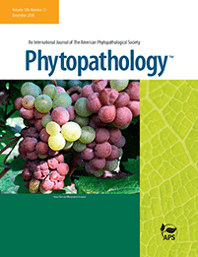Molecular epidemiology of Ralstonia solanacearum species complex strains causing bacterial wilt of potato in Uganda.
Abdurahman, A.; Parker, M.; Kreuze, J.F.; Elphinstone, J.; Struik, P.C.; Kigundu, A.; Arengo, E.; Sharma, K.
Bacterial wilt (BW) caused by the Ralstonia solanacearum species complex (RSSC) is a serious threat to potato production in Uganda. However, little is known about the extent of the disease and the type of the pathogen strains involved. A nationwide survey was conducted to study BW prevalence and incidence in potato, and potato tuber and stem samples of potential alternative hosts were collected for pathogen isolation. DNA was extracted from pure cultures for genetic diversity studies. The pathogen was phylotyped by multiplex PCR; then, a subset of isolates was typed at sequevar level. Isolates of the same sequevar were then haplotyped using multilocus tandem repeat sequence typing (TRST) schemes. BW prevalence and incidence in potato farms were 81.4 and 1.7%, respectively. Three RSSC phylotypes were identified, with the majority of the strains belonging to Phylotype II (80%) followed by Phylotype I (18.5%) and III (1.5%). Phylotype I strains belonged to Sequevar 31, and Phylotype II strains belonged to Sequevar 1. Potato-associated Phylotype II Sequevar 1 strains were more diverse (27 TRST haplotypes) than nonpotato Phylotype I (5 TRST haplotypes). Mapping of TRST haplotypes revealed that three TRST haplotypes of Phylotype II Sequevar 1 strains play an important epidemiological role in BW of potato in Uganda being disseminated via latently infected seed.

